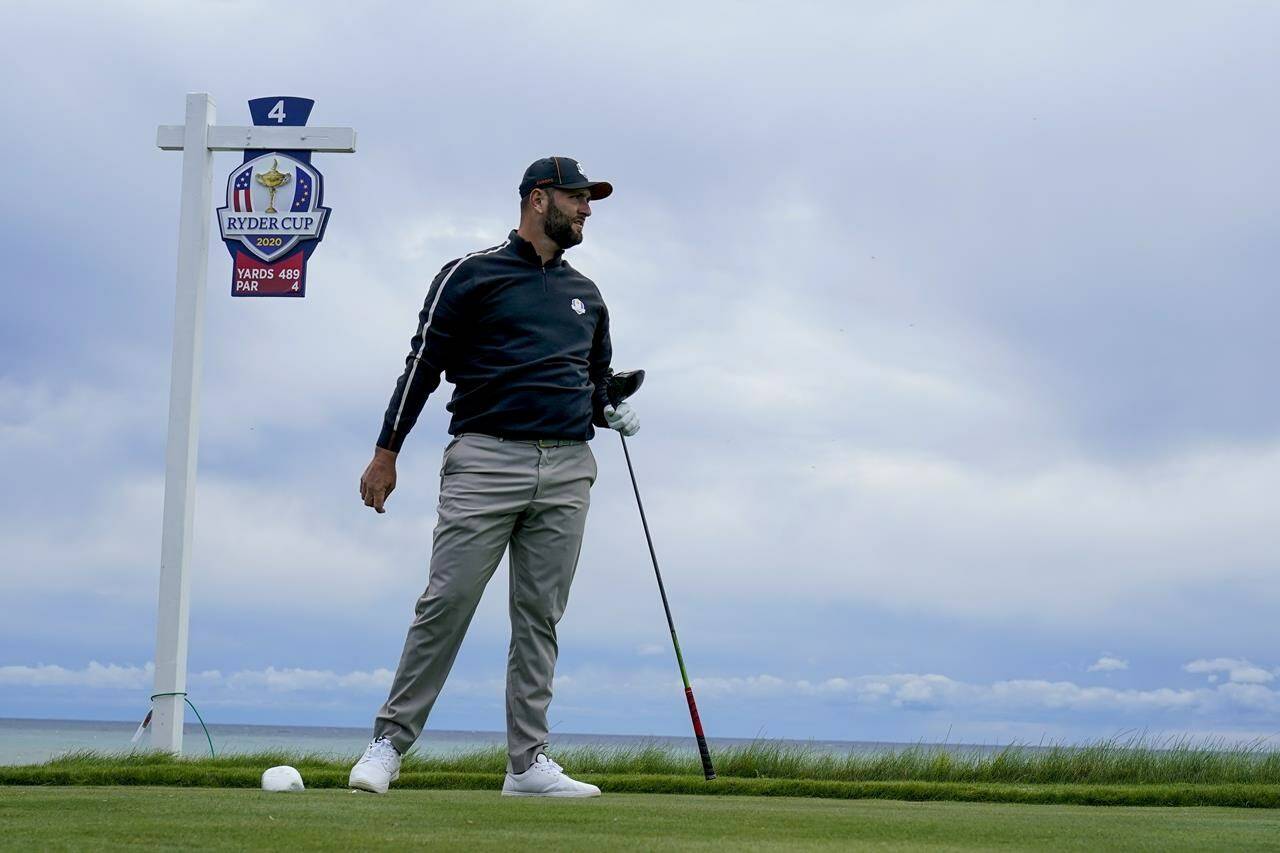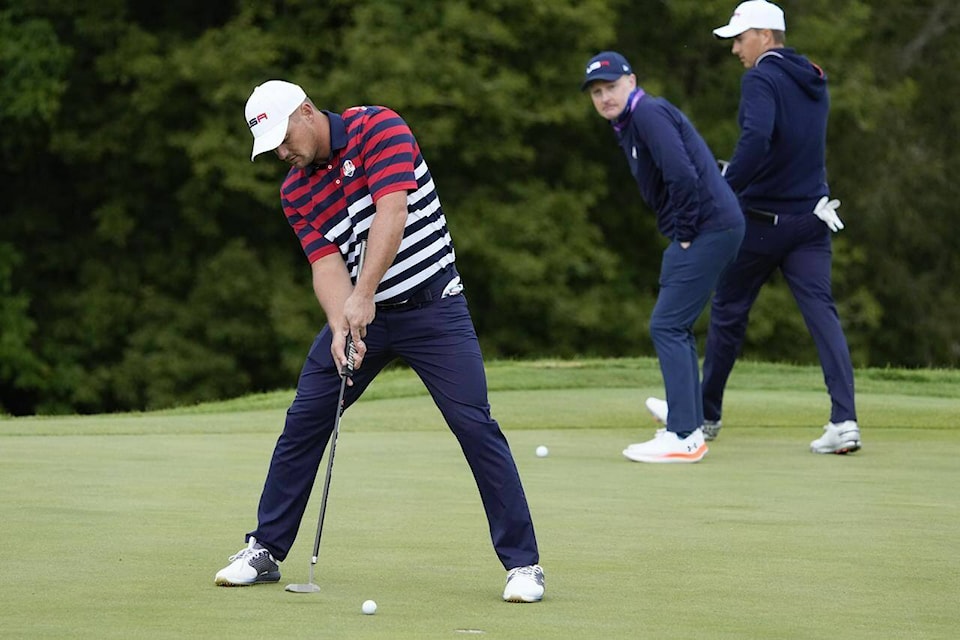SHEBOYGAN, Wis. (AP) — The Americans are running out of excuses in the Ryder Cup.
They bring another loaded team to Whistling Straits, 11 of them among the top 16 players in the world. Not only is it a home game, the travel restrictions because of COVID-19 make this crowd even more one-sided than Lambeau Field.
That’s part of what led Tony Finau to say, “This is a big one.”
What makes it so critical has more to do with a new generation of American golfers than any task force created to try to stop European dominance in the biennial matches.
Finau offered himself as an example as the third-oldest player on the team. He just turned 32. He played his first Ryder Cup in France three years ago. That qualifies him as one of the more experienced players because only three of his U.S. teammates have played more.
If the Americans want to change the culture, this is as good a time as any to start.
“We have a whole new team,” Finau said. “We have a team with no scar tissue. There’s only a handful of us that has even played in a Ryder Cup, and the few of those, we have winning records. So we actually don’t have guys on our team that have lost a lot in Ryder Cups.”
It all starts Friday morning in the chill of early fall off Lake Michigan. Justin Thomas and Jordan Spieth, who went 3-1 in France three years ago, are in the opening foursomes match against the Spanish duo of Jon Rahm and Sergio Garcia — the No. 1 player in the world and the leading points-scorer in Ryder Cup history.
“Spanish legacy is deep in the Ryder Cup and I’m hoping we can start a new tradition,” said Rahm, referring to the “Spanish Armada” of Seve Ballesteros and Jose Maria Olazabal, the best tandem in Ryder Cup history.
Even with mounting losses, the Americans have the most pressure that invariably comes with being the better team on paper. Despite losing nine of the last 12 times dating to 1995 — two years before leading U.S. qualifier and two-time major champion Collin Morikawa was born — they are the betting favorites.
“Everyone is playing great golf right now and that’s really the key to winning points,” said Daniel Berger, one of six rookies on the U.S. team. “There’s 11 other players you could throw at me and I would feel completely confident and trustworthy that if they had to hit a big shot or make a big putt, they could do it. That’s a big key for us.”
The response from Europe may as well be a collective yawn.
One team is looking for the secret formula to winning. The other keeps perfecting it.
The Europeans have spent most of the week tossing golf balls in the air on the first tee to determine teams for their practice rounds. That wasn’t a guise. The four teams for Europe in the opening session played in the same group just once over three days of practice.
“You don’t want to get bored playing with a guy,” European captain Padraig Harrington said. “You play three days with somebody, and then you’re playing with them the next five, four rounds of golf. That can be really tough.”
He wanted everyone to see each other before the week was over — his idea of team.
Their uniforms featured the green and gold of the Green Bay Packers one day, and they tossed foam Cheesehead hats to the crowd. Ian Poulter was among those tossing golf balls to the gallery on Thursday.
No one looks to be having as much fun, a product of winning so often. And then it tends to switch on Friday for the first of five sessions that determine who gets the gold trophy.
“I don’t think our switch flips as much as you think,” Paul Casey said. “It just ramps up. Maybe there are a few less smiles that are visible. But we’re still trying to have the time of our life and play amazing golf. … We are methodical, attention to detail. We try to leave no stone unturned because we know the margins are so small.
“We all know it could be down to one putt or a fraction of a shot every day.”
The margin really hasn’t been that small since what the Europeans refer to as the “Miracle at Medinah” in 2012 when they rallied from a 10-6 deficit.

